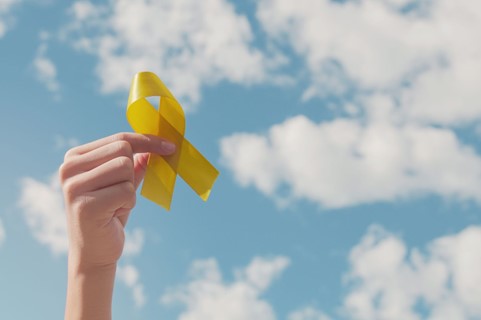Filip is a second year PhD student at the Department of Psychology and the SGDP Centre at KCL. He’s interested in genetically-informed research methods, self-harm and young people’s mental health.
September is Suicide Prevention Month – a time where organisations around the world raise awareness on how to decrease the number of people who die by suicide. According to the WHO, around 800,000 people die by suicide annually worldwide and in young people aged 15 to 29 suicide is the leading cause of death globally (WHO, 2021).
The current triennial theme of the World Suicide Prevention Day is “Creating Hope Through Action”, which highlights acting in advance, such as building an evidence base to build suicide prevention programmes upon.
Furthermore, during this year’s Suicide Prevention Month, the UK Department of Health and Social Care published “Suicide Prevention in England: 5-Year Cross-Sector Strategy”, which outlines the plans for suicide prevention over the next five years. One of its priorities is to improve evidence to inform effective interventions.
Should Self-Harm Prevention Be Considered Suicide Prevention?
It’s important to establish what suicide means in order to prevent it. The US National Institute of Mental Health defines it as death as a result of self-injury with the intention to die. Although some people suggest that suicide should be separated from non-suicidal self-harm, there are reasons to consider them jointly and to prevent any form of self-harm.
First, intentions behind an act of self-harm are only truly known to the individual. As such, it is difficult to separate reports of non-fatal suicide attempt from self-harm without suicidal intention, and it is even more difficult to know whether a death by suicide was intentional or an accident.
Second, recent evidence suggests that suicidal and non-suicidal self-harm share similar sets of genetic and environmental causal factors, i.e., aetiology, and both have comparably strong associations with depressive symptoms, leading to a suggestion that they might be on a spectrum rather than two discrete phenomena (Lim et al., 2021).
Third, a history of non-suicidal self-harm is a risk factor for later death by suicide (Hawton et al., 2003). As such, work to prevent self-harm of any kind should be seen as suicide prevention.
The Role of Stigma
 Suicide and self-harm receive a large amount of stigma, which prevents people from speaking up and seeking help. In our recent study conducted on young adult twins from England and Wales, we found that the majority of young people did not seek help after self-harming. Whilst common mental health conditions, such as depression, are increasingly more spoken about, the legacy of labelling suicide as a sin and a crime upholds a culture of shame.
Suicide and self-harm receive a large amount of stigma, which prevents people from speaking up and seeking help. In our recent study conducted on young adult twins from England and Wales, we found that the majority of young people did not seek help after self-harming. Whilst common mental health conditions, such as depression, are increasingly more spoken about, the legacy of labelling suicide as a sin and a crime upholds a culture of shame.
This is still reflected in language, e.g., committing suicide comes from commiting a crime, and killing oneself comes from killing another. However, shaming and criminalising suicide only prevents people with suicidal thoughts from seeking help in crisis.One thing that we can all do to decrease self-harm and suicide stigma is therefore to adjust the language that you use to talk about them. Instead of using terms associated with sin and crime, such as “commit” or “kill” use terms like “self-harm”, “suicide attempt” or “death by suicide”. You can read more about this here.
Stigma also prevents many from talking to their close ones about their suicidal thoughts. Creating a space where someone in distress can open up about their difficulties and be listened to can be of great help. One way to do so is to avoid making suicide an elephant in the room or expressing judgement around suicidal thoughts (e.g., avoid saying “don’t do something stupid” this invalidates someone’s distress and suicidal thoughts). Additionally, it’s important to communicate that we are open to having a conversation and listening. It can be difficult for the person in distress to bring up their suicidal feelings, and we can make it easier by using open questions and follow up questions (e.g., ‘how did that make you feel?’), and avoiding sharing opinions, such as expressing what is wrong or right and what people should do.
Evidence Informing Interventions in Young People
There are a number of factors that we should be aware of in order to prevent self-harm and death by suicide. In our recent study conducted on young adult twins from England and Wales, we found that women, gender minorities (e.g., trans and non-binary individuals), sexual minorities (e.g., lesbian, gay and bisexual individuals), and those who have experienced bullying were more likely to self-harm, and they also began self-harming at a younger age. Furthermore, we found that most young people said they self-harmed to “get relief from a terrible state of mind”, which suggests that self-harm might be a way of coping with psychological distress.
Considering our findings, we suggest that teaching coping strategies in adolescence and improving access to psychological support might decrease distress and the likelihood of self-harm and suicide. The 5-year Suicide Prevention plan for England highlights provision of tailored support to priority groups (including, for example, children and young people, and middle-aged men), and we suggest that these should specifically include girls and LGBT+ adolescents as a measure to prevent early initiation of self-harm. The plan also highlights addressing common risk factors at population level, and this work should include efforts to decrease bullying in schools.
In conclusion, as highlighted in the recent 5-year Suicide Prevention Plan for England, work must continue across sectors and communities to prioritise evidence-based interventions, raise awareness, and reduce stigma of self-harm and suicide.
If you are someone who experiences suicidal thoughts, know that you are strong for fighting them and that you are not alone. If you need urgent help, you can find it at:
Call 111 out of hours, or 999 if you have harmed yourself or may be about to harm yourself and your life is in danger
Contact one of the below helplines:
Samaritans – for everyone
Call 116 123
Email jo@samaritans.org
Campaign Against Living Miserably (CALM)
Call 0800 58 58 58 – 5pm to midnight every day
Live chat from 5pm until midnight https://www.thecalmzone.net/get-support
Papyrus – prevention of young suicide HOPELINE247
Call 0800 068 41 41
Text 07860 039967
Email pat@papyrus-uk.org
SOS Silence of Suicide – for everyone
Call 0300 1020 505 – 4pm to midnight every day
Email support@sossilenceofsuicide.org
References:
- Centre for Suicide Prevention. (2010, November 2). Suicide and Language. https://www.suicideinfo.ca/local_resource/suicideandlanguage/
- Kaleta, F. O., Ahmadzadeh, Y. I., Oginni, O., Pingault, J. B., McAdams, T. A., & Zavos, H. M. S. (2023). Self-Harm and Age of Initiation: Investigating Socio-demographic and Aetiological Associates in Twins (Pre-registration). Open Science Framework. https://doi.org/10.17605/OSF.IO/YP95A
- Lim, K. X., Krebs, G., Rimfeld, K., Pingault, J. B., & Rijsdijk, F. V. (2021). Investigating the genetic and environmental aetiologies of non-suicidal and suicidal self-harm: a twin study. Psychological medicine, 1-11. https://doi.org/10.1017/S0033291721000040
- National Institute of Mental Health. (2023, May). Suicide. https://www.nimh.nih.gov/health/statistics/suicide#part_2561
- UK Department of Health and Social Care. (2023, September 11). Suicide Prevention in England: 5-year Cross Sector Strategy. https://www.gov.uk/government/publications/suicide-prevention-strategy-for-england-2023-to-2028/suicide-prevention-in-england-5-year-cross-sector-strategy#introduction
- World Health Organization (2021). Suicide worldwide in 2019: global health estimates. https://www.who.int/publications/i/item/9789240026643



